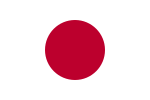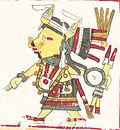Setsuwa (Japanese: 説話, romanized: setsu wa) is a Japanese literary genre. It consists of myths, legends, folktales, and anecdotes. Among the setsuwa, those...
5 KB (684 words) - 02:30, 28 October 2024
Uji Shūi Monogatari (category Setsuwa)
work is classified as setsuwa literature. Following in the footsteps of Konjaku Monogatarishū, it is the representative setsuwa work of the Kamakura period...
3 KB (311 words) - 21:25, 13 May 2024
List of National Treasures of Japan (writings: Japanese books) (section Monogatari, Japanese-Chinese poetry, setsuwa)
literary genre called setsuwa ("informative narration") goes back to orally transmitted myths, legends, folktales, and anecdotes. Setsuwa comprise the oldest...
130 KB (7,810 words) - 22:01, 8 October 2024
of beauty" (美人説話, bijin-setsuwa) "tales of sensuality" (好色説話, kōshoku-setsuwa) "tales of haughtiness" (驕慢説話, kyōman-setsuwa) "tales of poetry/poetic...
20 KB (1,747 words) - 06:48, 16 June 2024
Onihitokuchi (鬼一口) refers to a Japanese setsuwa (legend) in which oni (ogres) eat humans in one mouthful. This in turn refers to something extremely dangerous...
4 KB (526 words) - 16:13, 4 August 2024
considered to be a humorous story in setsuwa. The Konjaku Monogatarishū and the Uji Shūi Monogatari were setsuwa collections compiled from the Heian period...
18 KB (1,913 words) - 17:12, 24 June 2024
Nihon Ryōiki (category Setsuwa)
early Heian period setsuwa collection. Written by Kyōkai between 787 and 824, it is Japan's oldest collection of Buddhist setsuwa. It is three volumes...
4 KB (437 words) - 21:12, 21 September 2024
Monogatari (section Setsuwa-monogatari)
Monogatari (Japanese: 物語, [monoɡaꜜtaɾi]) is a literary form in traditional Japanese literature – an extended prose narrative tale comparable to epic literature...
5 KB (583 words) - 18:40, 9 August 2024
period (794–1185), oni were often depicted in Japanese literature, such as setsuwa, as terrifying monsters that ate people. A prominent depiction of oni is...
35 KB (4,071 words) - 02:18, 17 November 2024
of feminine beauty".: 43 He also draws parallels with the vernacular setsuwa tradition and anecdotes told of Fujiwara Munesuke, the bee-keeping minister...
4 KB (390 words) - 23:28, 2 June 2024
creation of standalone setsuwa works. In the Nanbokuchō period, there was the Yoshino Shūi [ja], a collection of uta monogatari-type setsuwa about poets tied...
75 KB (8,733 words) - 00:09, 28 March 2024
(鬼童丸, 鬼同丸) is an oni that appears in the Kamakura period collection of setsuwa, the Kokon Chomonjū, among other sources. As described in the Kokon Chomonjū...
5 KB (640 words) - 13:47, 3 March 2022
Japanese] (1992). "Dai-2 shō. Kitsune no Atai setsuwa (jō 2 kan)" 第二章狐の直説話(上2巻). Nihon ryōiki setsuwa no kenkyū 日本霊異記説話の研究 (in Japanese). Tokyo: Ōfūsha...
65 KB (7,276 words) - 23:27, 16 November 2024
Monogatarishū (12th century) contain a number of a type of tales called setsuwa, a generic term for narratives of various nature, anything from moralizing...
18 KB (2,089 words) - 06:05, 23 July 2024
Japanese), 34 (8): 1–10 —— (1967), "Kobunken wo kiso to shita Momotarō setsuwa no kenkyū (I)" 古文献を基礎とした 桃太郎説話の研究(上) [A Study of "Momotaro" : Based on...
37 KB (4,024 words) - 10:54, 25 October 2024
scene of the crossing. The story originally appeared in two collections of setsuwa or tales, Dainihonkoku hokekyō kenki (c. 1040) and Konjaku Monogatarishū...
20 KB (1,965 words) - 04:53, 30 May 2024
or linked verse, and Noh theater developed among the common people, and setsuwa such as the Nihon Ryoiki were created by Buddhist priests for preaching...
41 KB (4,908 words) - 20:15, 21 October 2024
literature date back to the Kamakura period (1185–1333). In the collection of setsuwa (oral tradition of folktales before the 14th century), the Kokon Chomonjū...
30 KB (3,806 words) - 03:46, 3 November 2024
Koshikibu (beppon) (小式部(別本)) in Japanese. It is one of a number of medieval setsuwa-type works whose protagonist is the Heian-era waka poet Koshikibu no Naishi...
6 KB (584 words) - 20:47, 11 April 2021
folklore, there are large cats that attack humans. At the same time, in the setsuwa collection Kokon Chomonjū, in the story "Kankyō Hōin (観教法印)", an old cat...
15 KB (1,967 words) - 03:50, 3 November 2024
(19): 25 Myung (1992), p. 71. Jo, Sulseob 曹述燮 (2005), "Ryū no kiki to sono setsuwa-teki tenkai:Gensei daiō oyobi Shinsei jodaiō/Gotaji jō wo chūshin ni"...
36 KB (3,779 words) - 01:03, 12 November 2024
previous year's exhibition of Japanese paintings. This work is based on setsuwa stories written in "Konjaku Monogatarishū" and "Uji Shūi Monogatari", which...
24 KB (2,780 words) - 04:19, 22 October 2024
it in a vacant field), and the moral of this Buddhist sermon-type tale (setsuwa) is that this is no treasure after all. In The Tale of Heike is an anecdote...
10 KB (1,214 words) - 20:23, 2 December 2023
inscription in Persian for Myōe. In 1222, Keisei composed a collection of setsuwa entitled Kankyo no Tomo (Companion of a Quiet Life, or Companion in Solitude)...
2 KB (238 words) - 23:26, 6 February 2023
Kyonran (1998-10-01), "Nikkan ni okeru denshō no arikata: Sayohime setsuwa to Jesan setsuwa" 日・韓における伝承のあり方 ―「さよひめ」説話と「堤上(ジェサン)」説話― [Down the Generations in...
59 KB (6,832 words) - 23:41, 13 November 2024
Jizō worship. In the Ryōki (ca. 822 CE), the earliest found collection of setsuwa, a story with Fujiwara Hirotari is included. He passed away and caught...
37 KB (4,385 words) - 00:56, 6 November 2024
Konjaku Monogatarishū (category Setsuwa)
tales from the Konjaku include Jun'ichirō Tanizaki and Hori Tatsuo. The setsuwa ("spoken story") in Konjaku Monogatari Shū has two main purposes: religious...
12 KB (1,478 words) - 07:12, 21 October 2024
of unknown true form. The noh play Nue, by Zeami Motokiyo, based on the setsuwa, the Heike Monogatari. They are a regular feature of the Kiri-noh (fifth...
16 KB (2,164 words) - 05:46, 25 July 2024
Sayohime(var. Lady Otohi or Otohi-hime) are classed as the Miwasan-kei setsuwa (三輪山型説話, "stories of the Mt. Miwa pattern") But there is no enduring sign...
5 KB (456 words) - 03:19, 21 January 2024
with Japan, and so they turned their attention to Bai Juyi’s poetry. A setsuwa in the Keiranshūyōshū (渓嵐拾葉集) by Kōshu (光宗) identifies Yang Guifei’s palace...
108 KB (12,696 words) - 09:49, 2 November 2024




















